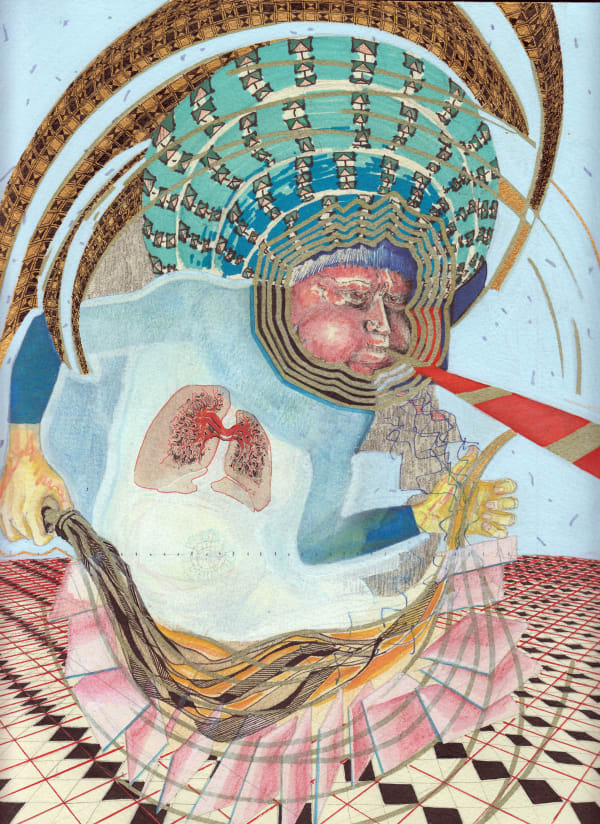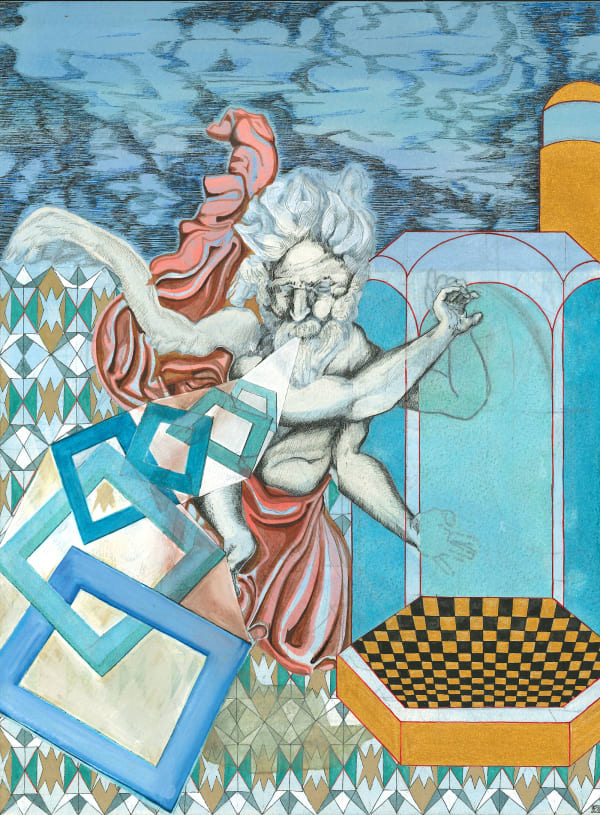
Peter Depelchin
Winds have often given direction to maps. They gave direction to the earliest representations of the world and as trees do, they form an intermediate between the sky and the earth. In relation to Depelchin’s most recent works, the winds have a singular position: they are the bridge, the thriving force to lift creator and spectator up to Depelchin’s so called creational space. Two of the winds have been represented in relation to a distorted architectural space, seemingly a pavilion or an alcove. These pavilions witness of this creational space, a twin sister of our contemporary space. Similarly, to the series of scale models called “Temple de Pan” these two architectural forms reflect on the representation of space and its effect on represented narratives.
Peter Depelchin’s four winds; Boreas, Zephyros, Notos and Euros all refer to different paintings and sources.
Notos, the South wind is the first wind represented with Depelchin’s so called “creational space”. As South winds are often calm and dry (especially when occurring in the Northern hemisphere), the wind is falling towards a black hole in the floor. The figure is inspired by Peter Paulus Rubens painting “Sleeping Silenus” while the pavilion was inspired by Melchior Broederlam’s left panel of the altarpiece by Jacob de Baerze (Musée des Beaux-Arts, Dijon).
- X
- Tumblr



